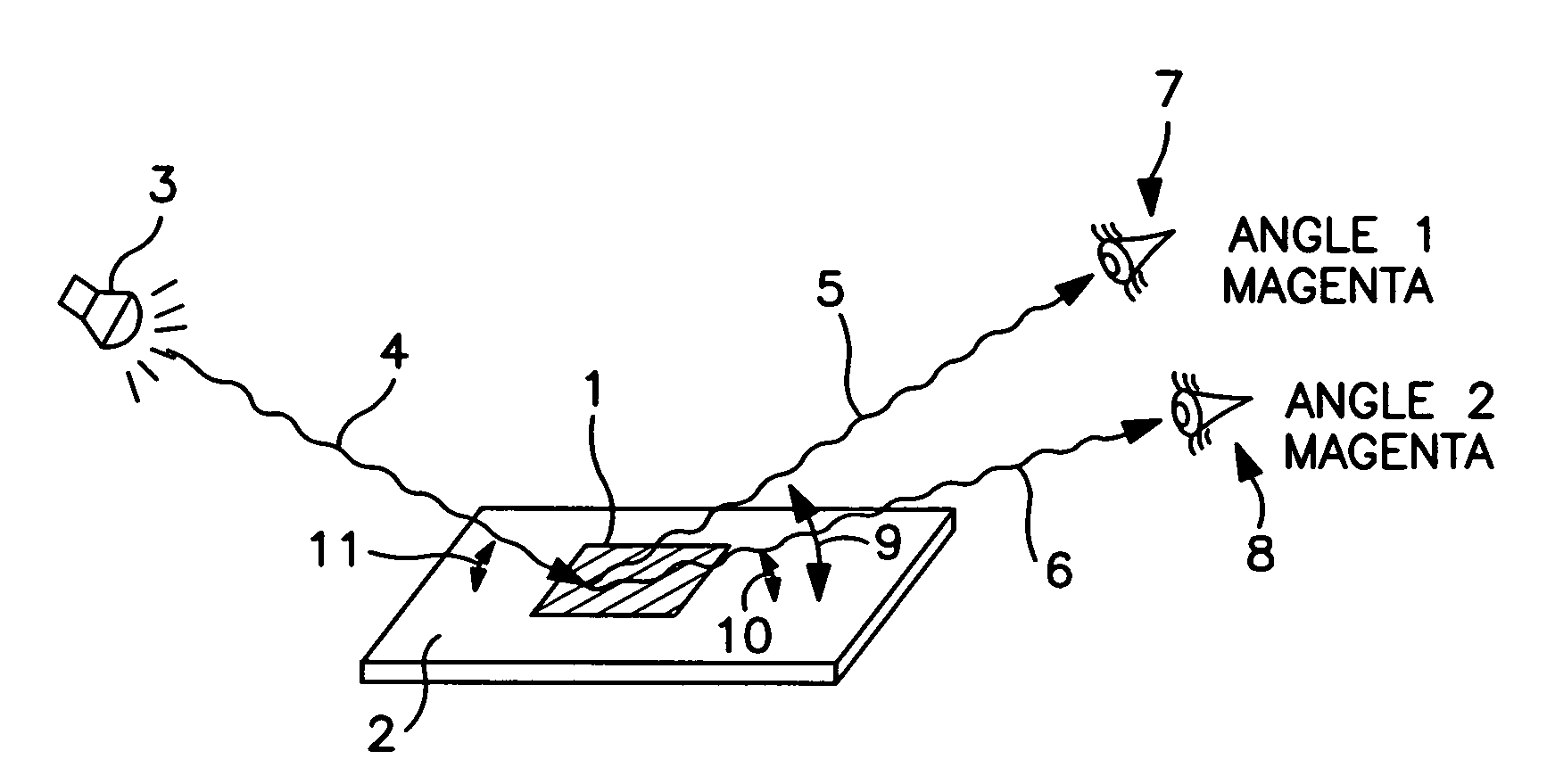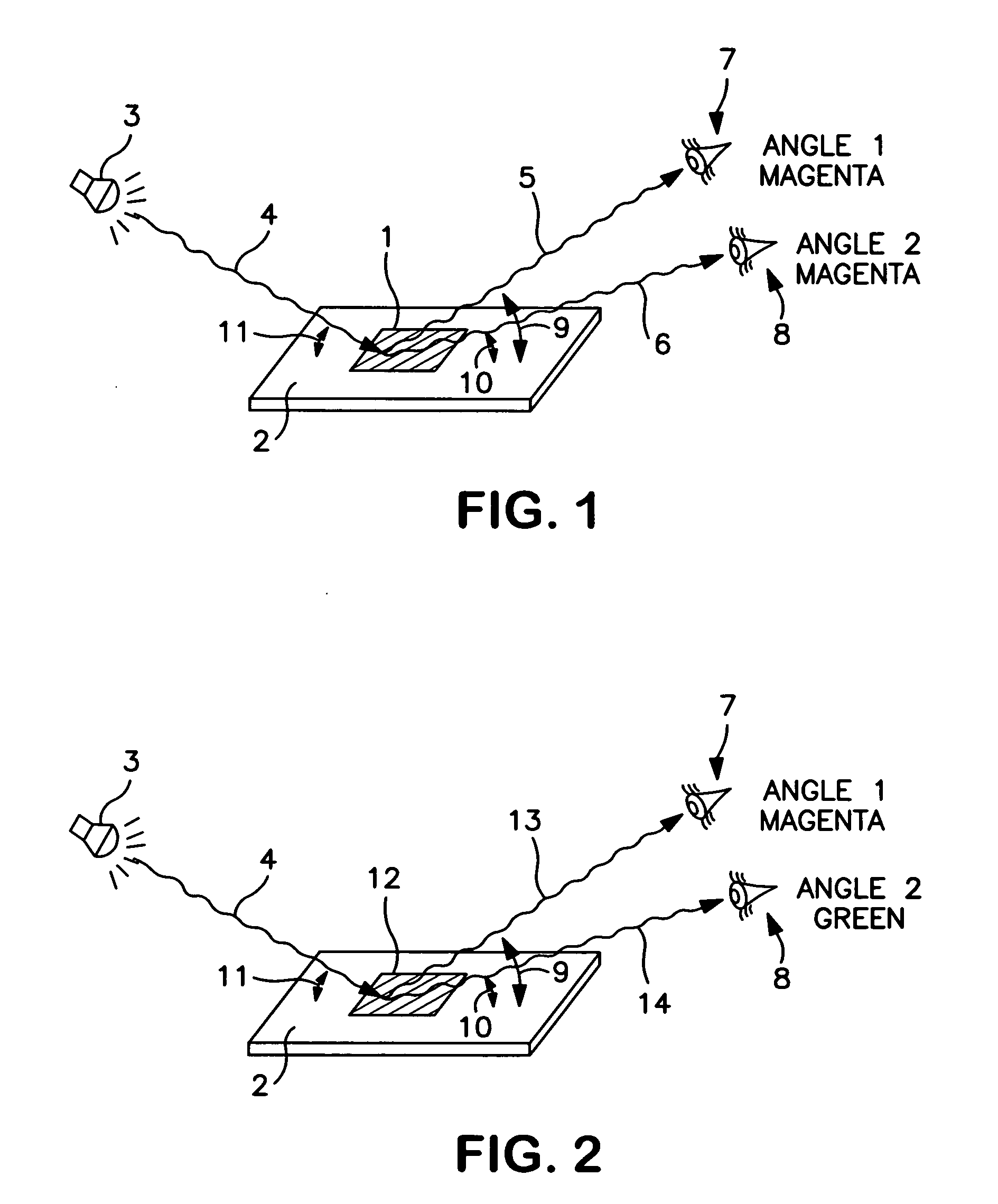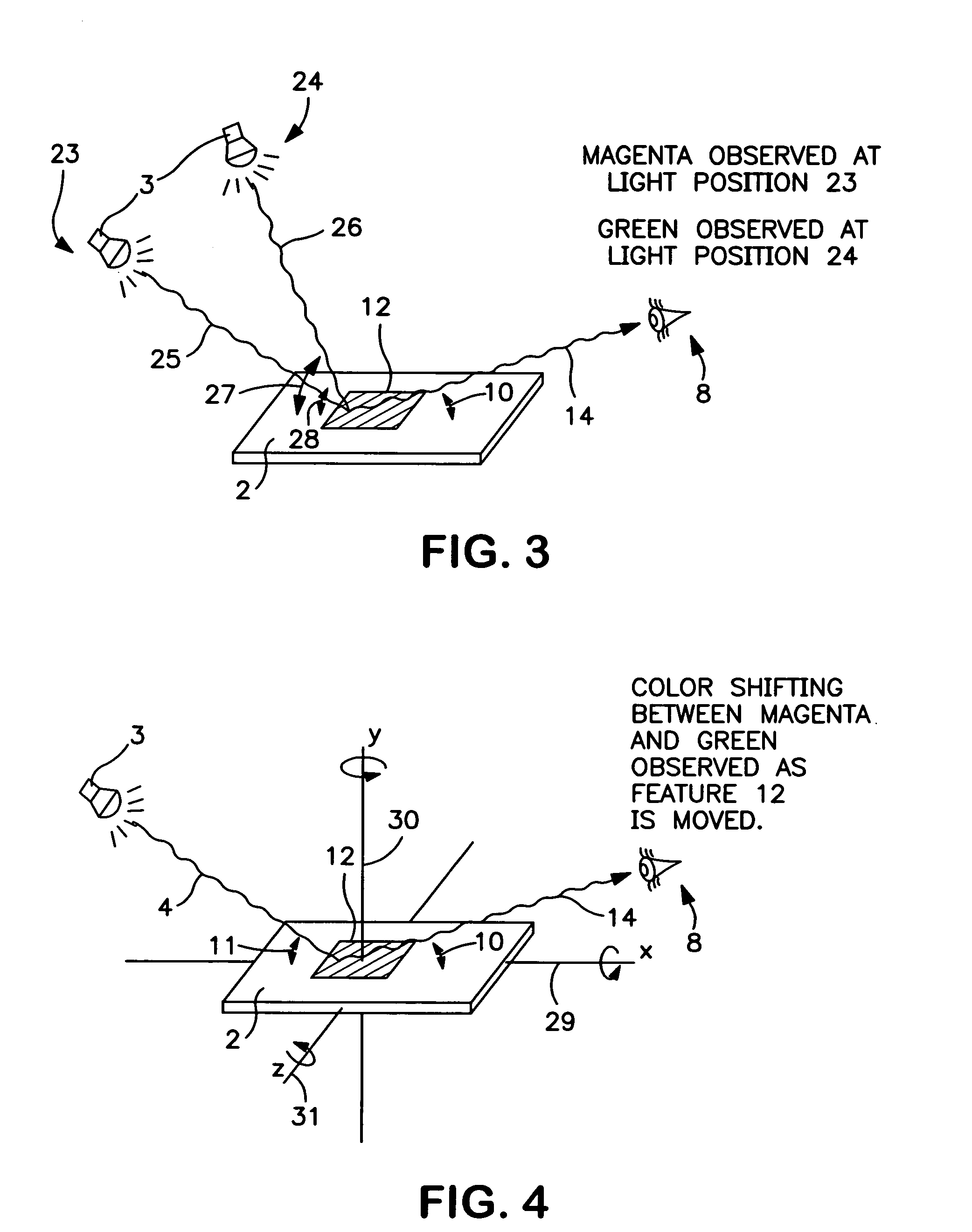Colored reflective features and inks and processes for making them
a technology of reflective features and inks, applied in the field of reflective features and to processes for making reflective features, can solve the problems of general undesirable effects, inks containing platelets and flakes,
- Summary
- Abstract
- Description
- Claims
- Application Information
AI Technical Summary
Problems solved by technology
Method used
Image
Examples
example 1
Silver Nanoparticles+Rhodamine on Non-Porous Substrate
[0115]A reflective feature was formed by ink jet printing an ink comprising silver nanoparticles (average particle size=20-80 nm) and rhodamine dye onto a non-porous substrate. The ink had the formulation shown in Table 3, below.
TABLE 3SILVER NANOPARTICLE / RHODAMINEINK JET INK FORMULATIONIngredientWeight PercentRhodamine4.3Silver Nanoparticles9.5Glycerol16.4Ethanol44.0Ethylene Glycol25.8
[0116]The substrate comprised glossy Epson photopaper, which was made substantially non-porous by forming a non-porous lacquer coating on the surface of the paper. The coating was formed by applying RJE A8070 Lacquer Medium cvec 12414 (Cavalier Inks and Coatings, Richmond, Va.) onto the Epson photopaper and allowing it to dry.
[0117]The ink was then ink jet printed onto the lacquer-coated paper utilizing a Hewlett-Packard thermal ink jet printing head (Model HP45A cartridge) and allowed to dry. The printing pattern comprised a repeating pattern of m...
example 2
Silver Nanoparticles+Rhodamine on Porous Substrate
[0119]The ink employed in Example 1 was ink jet printed onto a substantially porous substrate, (uncoated) glossy Epson photopaper, utilizing a Hewlett-Packard thermal ink jet printing head (Model HP45A cartridge) and allowed to dry. The printing pattern comprised a repeating pattern of microprinted numbers (2 Pt. font size). Visibly, the reflective feature exhibited a dark magenta metallic color that did not change as the viewing angle changed. Unlike the feature formed in Example 1, the reflective feature formed in Example 2 exhibited color constancy. Microscopically, the feature exhibited a halo effect, as shown in FIG. 5.
example 3
Silver Nanoparticles+Basic Fuchsin on Non-Porous Substrate
[0120]A reflective feature was formed by ink jet printing an ink comprising silver nanoparticles (average particle size=20-80 nm) and basic fuchsin dye onto a non-porous substrate. The ink had the formulation shown in Table 4, below.
TABLE 4SILVER NANOPARTICLE / BASIC FUCHSININK JET INK FORMULATIONIngredientWeight PercentBasic Fuchsin4.3Silver Nanoparticles9.5Glycerol16.4Ethanol44.0Ethylene Glycol25.8
[0121]The substrate comprised glossy Epson photopaper, which was made substantially non-porous by forming a non-porous lacquer coating on the surface of the paper. The coating was formed by applying RJE A8070 Lacquer Medium cvec 12414 (Cavalier Inks and Coatings, Richmond, Va.) onto the Epson photopaper and allowing it to dry.
[0122]The ink was ink jet printed onto the lacquer-coated paper utilizing a Hewlett-Packard thermal ink jet printing head (Model HP45A cartridge) and allowed to dry. The printing pattern comprised a repeating p...
PUM
| Property | Measurement | Unit |
|---|---|---|
| surface roughness | aaaaa | aaaaa |
| particle size | aaaaa | aaaaa |
| viscosity | aaaaa | aaaaa |
Abstract
Description
Claims
Application Information
 Login to View More
Login to View More - R&D
- Intellectual Property
- Life Sciences
- Materials
- Tech Scout
- Unparalleled Data Quality
- Higher Quality Content
- 60% Fewer Hallucinations
Browse by: Latest US Patents, China's latest patents, Technical Efficacy Thesaurus, Application Domain, Technology Topic, Popular Technical Reports.
© 2025 PatSnap. All rights reserved.Legal|Privacy policy|Modern Slavery Act Transparency Statement|Sitemap|About US| Contact US: help@patsnap.com



